|
Henry Percy had played his part in the usurpation of King Richard II and aided Henry Bolingbroke, later Henry IV in his successful attempt to gain the crown of England. By 1402 however, the Percy's had changed their allegiances and on the 19th of February, Henry, Ist Earl of Northumberland faced the king's army, under the leadership of Yorkshireman Sir Thomas Rokeby, just south of Wetherby in Yorkshire at Bramham Moor. "The exact sizes and compositions of the contending armies is not recorded but they were certainly far smaller than the thousands engaged at Shrewsbury three years earlier and little detail of the actual engagement survives. It is likely that the action followed the course of many medieval battles where the armies and generals were evenly matched. Lord Percy is said to have positioned his men carefully and awaited Rokeby’s arrival at 2.00 p.m. when battle was instantly joined and, though not long in duration, was said to be sharp, furious and bloody. It is generally believed that the English longbow, the ultimate weapon of its day (as evidenced at Agincourt seven years later), thinned the rebel lines before the English charged the northern forces and violent hand-to-hand combat ensued in a huge melee, probably with little tactical direction " (1) Henry IV's army defeated Percy's forces, in the final battle of the “Percy Rebellion”. This victory removed the threat of a rebellion in the north.
1 Comment
In 1587 Elizabeth I made Robert Deveraux the Earl of Essex, Master of the Horse, six years later in 1593 she made him a Privy Councillor. That year he led a successful attack on the Spanish port of Cadiz. Three years later he returned home a hero. Deveraux was intelligent and charming and he thought by flattering the aging queen he could get away with anything, the events of this day in 1601 would prove him wrong. While Deveraux was away changes within Elizabeth's court affected his standing, his major problem was the promotion of Robert Cecil who Deveraux regarded as an enemy, in fact, Robert Deveraux was his own worst enemy - for making peace in Ireland against the order of the queen he was banned from court and thus financially ruined, was this the reason behind his rebellion? On the morning of the 8th February in 1601, Deveraux and his followers, notably the Henry Wriothesley, the 3rd Earl of Southampton, made their way through the city of London in, it is thought, to plead with the queen, Robert Cecil however thought otherwise and sent a message to the London's mayor. Deveraux was publicly denounced as a traitor and eventually captured, he would be tried for treason before the month was out. So, was Robert Devereaux a real threat to the monarchy? Was the queen in real danger and what really motivated William Cecil to see off the Earl of Essex? This rebellion is nicely played out in the 2011 film Anonymous, and here you can see Robert Deveraux (Sam Reed) persuading Henry Wriothesley (Xavier Samuel) that the plot couldn't fail!
I often wonder what I would do in a given situation in history, for instance, would I have followed Richard Duke of York against Henry VI? At Henry VIII's separation from Rome would I have stuck with the old religion or taken up the new Protestant one? Nobody knows what they would have done, and I suppose it all depends on who your family were, what positions they held and how they thought the turning of fortunes wheel might affect them. My 15th century West Country ancestor was a fervent heretic hunter, yet his Catholic son, considered ‘suspect and weak and followed only those noblemen who are dangerous in the county’ conformed to the teachings of the Protestant church. I have to assume that, if I was with my ancestor at this time I might have joined him in capturing those men who were not of the same faith as me or maybe I would have been willing to join a rebellion that was taking place in the first few months of the reign of Queen Mary that was known as Wyatt's Rebellion. The proposed marriage of the newly crowned Queen Mary to Philip of Spain and the fear that many people had that England would once again turn towards the old religion was at the root of Wyatt's rebellion. He had previously been imprisoned for his support of Lady Jane Grey’s claim to the throne but he had managed to escape the executioner's axe. Wyatt's new plan was to remove Mary from the throne and replace her with Elizabeth, who would then marry Edward Courtenay. Courtenay was never a proven rebel but he was however embroiled in the plot. Peter Carew, a West Country gentleman did take part as did Henry Grey, Duke of Suffolk. Many others joined Wyatt but no one seemed to notice that the vast majority of the populace had taken to Mary as their queen. On entering London Wyatt's rebels were outnumbered by the queen's forces and Wyatt was captured. While in the tower Wyatt named Edward Courtenay as the instigator of the rebellion and begged Courtenay to admit to it. By implication, Courtenay and Princess Elizabeth were suspected of being involved and they too were imprisoned, when no evidence was found they were both released and Courtenay fled the country but Wyatt was sent to trial at Westminster Hall on the 15th of March. Thomas Wyatt mounted the scaffold on the 11th April in 1554 and was executed for treason. Following his trial Thomas Wyatt was beheaded on Tower Hill, his body quartered and his bowels and genitals burned. Wyatt's demise was gruesome but the treatment of his remains was even more so, his head and body parts were then taken and parboiled and were later displayed for all to see, his head however disappeared.
What of the fate of Carew and the Duke of Suffolk? Carew, like Courteney, escaped abroad he was captured and imprisoned but later released on payment of his debts to the crown. The Duke of Suffolk also escaped but was found on his estate in Warwickshire, where he was betrayed by his gamekeeper. On the 25th January 1554, what has come to be known as the Wyatt Rebellion began with a proclamation read out in the market square of Maidstone - 'Forasmuch as it is now spred abrode and certainly pronounced by the lords chancelour and other of the counsell, of the Quenes determinate pleasure to marry w. a stranger: etc we therefore write unto you, because you be our neighbors, because you be our frandes, and because you be Englishmen, that you will joyne with us, as we will with you unto death in this behalfe, protecting unto you before God...' Thomas Wyatt's plan was to remove Mary from the throne of England and replace her with Elizabeth who would then marry West Country nobleman Edward Courtenay, Earl of Devon. By the end of January 1554, Sir Thomas Wyatt and the four thousand men marched to Blackheath, south-east of the City of London to secure the advancements of 'liberty and commonwealth' that had been threatened by 'the Queen's determinate pleasure to marry with a stranger.’ The rebellion was a failure, on entering the city Wyatt's rebels were outnumbered by the queen's forces and Wyatt was captured. In 1497, Henry Tudor, who took the crown of England from Richard III at the Battle of Bosworth in 1485, began to levy taxes on the Cornish people to pay for his wars in Scotland. This lead to what history calls the Cornish Rebellion of June that year. The rebellion began with voices of unrest in the village of St Keverne where Michael Joseph An Gof and Thomas Flamank spoke out about these taxes and what they thought the people of Cornwall should do about it. The rebellion ended on the 28th June with the execution of James Tuchet, Baron Audley who lead the rebels to London. At that time, and written in the Cornish language was a miracle play called Beunans Meriasek, it's theme was about the struggle between good and evil. In this play, evil is represented by King Teudar. It's likely the Cornish were using this play to criticise the king in a subtler way than that of violence.
I often wonder what I would do in a given situation in history, for instance, would I have followed Richard Duke of York against Henry VI? At Henry VIII's separation with Rome would I have stuck with the old religion or taken up the new Protestant one? Nobody knows what they would have done, and I suppose it all depends on who your family were, what positions they held and how they thought the turning of fortunes wheel might affect them. My 15th century West Country ancestor was a fervent heretic hunter, yet his Catholic son, considered ‘suspect and weak and followed only those noblemen who are dangerous in the county’ conformed to the teachings of the Protestant church. I have to assumes that, if I was with my ancestor at this time I might to have joined him in capturing those men who were not of the same faith as me or maybe I would have been willing to join a rebellion that was taking place in the first few months of the reign of Queen Mary that was known as Wyatt's Rebellion. The proposed marriage of the newly crowned Queen Mary to Philip of Spain and the fear that many people had that England would once again turn towards the old religion was at the root of Wyatt's rebellion. He had previously been imprisoned for his support of Lady Jane Grey’s claim to the throne but he had managed to escape the executioner's axe. Wyatt's new plan was to remove Mary from the throne and replace her with her Elizabeth, who would then marry Edward Courtenay. Courtenay was never a proven rebel but he was however embroiled in the plot. Peter Carew, a West Country gentleman did take part as did Henry Grey, Duke of Suffolk. Many others joined Wyatt but no one seemed to notice that the vast majority of the populace had taken to Mary as their queen. On entering London Wyatt's rebels were outnumbered by the queen's forces and Wyatt was captured. While in the tower Wyatt named Edward Courtenay as the instigator of the rebellion and begged Courtenay to admit to it. By implication, Courtenay and Princess Elizabeth were suspected of being involved and they too were imprisoned, when no evidence was found they were both released and Courtenay fled the country but Wyatt was sent to trial at Westminster Hall on 15th of March. Thomas Wyatt mounted the scaffold on the 11th April in 1554 and was executed for treason. Following his trial Thomas Wyatt was beheaded on Tower Hill, his body quartered and his bowels and genitals burned. Wyatt's demise was gruesome but the treatment of his remains even more so, his head and body parts were then taken and parboiled and were later displayed for all to see, his head however disappeared. What of the fate of Carew and the Duke of Suffolk? Carew, like Courteney, escaped abroad he was captured and imprisoned but later released on payment of his debts to the crown. The Duke of Suffolk also escaped but was found on his estate in Warwickshire, where he was betrayed by his gamekeeper.
I often wonder what I would do in a given situation in history, for instance, would I have followed Richard Duke of York against Henry VI? At Henry VIII's separation with Rome would I have stuck with the old religion or taken up the new Protestant one? Nobody knows what they would have done, and I suppose it all depends on who your family were, what positions they held and how they thought the turning of fortunes wheel might affect them. My 15th century West Country ancestor was a fervent heretic hunter, yet his Catholic son, considered ‘suspect and weak and followed only those noblemen who are dangerous in the county’ conformed to the teachings of the Protestant church. I have to assumes that, if I was with my ancestor at this time I might to have joined him in capturing those men who were not of the same faith as me or maybe I would have been willing to join a rebellion that was taking place in the first few months of the reign of Queen Mary that was known as Wyatt's Rebellion. For leading a rebellion against the crown Thomas Wyatt mounted the scaffold on the 11th April in 1554 and was executed for treason. The proposed marriage of the newly crowned Queen Mary to Philip of Spain and the fear that many people had that England would once again turn towards the old religion was at the root of Wyatt's rebellion. He had previously been imprisoned for his support of Lady Jane Grey’s claim to the throne but he had managed to escape the executioner's axe. Wyatt's new plan was to remove Mary from the throne and replace her with her Elizabeth, who would then marry Edward Courtenay. Courtenay was never a proven rebel but he was however embroiled in the plot. Peter Carew, a West Country gentleman did take part as did Henry Grey, Duke of Suffolk. Many others joined Wyatt but no one seemed to notice that the vast majority of the populace had taken to Mary as their queen. On entering London Wyatt's rebels were outnumbered by the queen's forces and Wyatt was captured. While in the tower Wyatt named Edward Courtenay as the instigator of the rebellion and begged Courtenay to admit to it. By implication, Courtenay and Princess Elizabeth were suspected of being involved and they too were imprisoned, when no evidence was found they were both released and Courtenay fled the country but Wyatt was sent to trial at Westminster Hall on 15th March. Following his trial Thomas Wyatt was beheaded at Tower Hill, his body quartered and his bowels and genitals burned. Wyatt's demise was gruesome but the treatment of his remains even more so, his head and body parts were then taken and parboiled and were later displayed for all to see, his head however disappeared.
What of the fate of Carew and the Duke of Suffolk? Carew, like Courteney, escaped abroad he was captured and imprisoned but later released on payment of his debts to the crown. The Duke of Suffolk also escaped but was found on his estate in Warwickshire, where he was betrayed by his gamekeeper. It was on the 12/13th June in 1381 that over 100,000 peasants marched to London, headed by one Wat Tyler, in the hope that government and their king would listen to their grievances. Between the years 1348 and 1350 thousands of men, women and children had died due to what we now call the Black Death. Just over thirty years later in 1381, England had still not recovered, workers were few, jobs were many, the treasury was empty and in an effort to counter this taxation was increased. This new tax angered the poor, for they had come to enjoy their 'freedom' and to a certain extent they had gained the ability to control their own lives. In 1380, to rectify the situation, a poll tax to raise money to help England financial situation was introduced that would initially result in the nonpayment of taxes but escalate into violence and death. The seeds of this revolt were set just a month previous, you can read about that here
meanderingthroughtime.weebly.com/history-blog/john-bampton-and-the-events-of-may-1381 In 1376, the death of Edward of Woodstock, commonly known as the Black Prince can be equated to an ocean landslide that eventually causes a devastating Tsunami on the other side of the world. I consider it the starting point of the Wars of the Roses, and, more importantly, the catalyst for all that occurred following the ascent of Richard II to the English throne and up to his usurpation in 1399. Putting the many effects the Black Prince's death aside, I would like to write of one man, Simon of Sudbury, who was caught up in all of this. Sudbury, as his name suggests, was from the village of Sudbury in Suffolk, it's not known when he left this small East Anglian village or if he ever revisited but he certainly had a great fondness for the place. He founded St Leonard's, a leper hospital in 1372 and the College of St Gregory two years later. In the late 1340's Sudbury had studied in Paris, moved to Rome and then back again to England to take up a post in the court of Edward III. It was as Archbishop of Canterbury, at Westminster Abbey, that he crowned Richard of Bordeaux, the Black Prince’s surviving son, king of England. Five years later it was Sudbury, in his new post as Chancellor of England, that rebels vented their anger. It was the events that occurred in a six months period of 1381 that led to Sudbury's violent death on the 14th June. England had not recovered from the Black Death, workers were few, jobs were many, the treasury was empty and in an effort to counter this taxation was increased. This, of course, angered the poor, for they had come to like their 'freedom.' In 1380, to rectify the situation, a poll tax to raise money to help England's financial situation was introduced, those in authority thought it a grand idea, the rest of the country did not, consequently, there was trouble. Between 13th and the 15th of June over 100,000 peasants marched on the country's capital led by one Wat Tyler. Watching the proceedings from within the Tower of London, Sudbury would have seen the young king do his bit in appeasing these so called rebels, making promises that he didn't keep. Sudbury and Robert Hales, England's Treasurer soon realised that their lives were in danger when they saw that the rebels had entered through the gates of the Tower of London. Hiding in the White Tower, Sudbury was found praying. Both men were dragged out and decapitated. Sudbury must have suffered greatly, his ear was sliced and the bone in his neck showed that there had been more than two strokes to take off his head. Both Sudbury and Hales' heads were put on poles and carried about the city by the rebels. As mentioned earlier, the boy king never kept his promise to the peasants and eventually Wat Tyler's head was exchanged for that of Sudbury's, whose body was taken to Canterbury, but his head elsewhere. Sudbury's mummified skull rests in a small cupboard in St Gregory's Church Sudbury and here we can see poor Simon's skull, with skin still attached. In 2011, over six hundred years after his death, forensic artist Adrienne Barker from the University of Dundee reconstructed Sudbury’s head using detail from the skull. Adrienne said, “I hope people in Sudbury like what we’ve done but he’s a strange looking fellow so it’ll be interesting to see their reactions.” In the first twelve years of his reign, Henry VII had successfully put down a number of major threats. They had all come from the Yorkist opposition, the de la Poles the sons of Elizabeth of York, Lambert Simnel and Perkin Warbeck, pretenders to the throne. In the June of 1497, the rumblings of a new threat to Henry's reign could be heard in the most western part of England that was not of a dynastic nature, it was a tax riot that turned into full scale rebellion. When Henry imposed yet another subsidy on the people to finance his war against the Scots, there was outrage in the county, traditionally it was the northern counties that bore the brunt of this taxation. Poverty among the tin workers and labourers of Cornwall was rife, Michael Joseph An Gof, a blacksmith from the Cornish village of St Keverne was the first to rouse his village to rebellion and Thomas Flamank, a lawyer of Bodmin whose father Sir Richard Flamank was Cornwall's royal tax collector, were inciting rebellion in Bodmin urging the people to march and take their grievances to the King. They began to march peacefully to London, picking up supporters on the way. Thomas Flamank spoke at public meetings against the imposition of this tax. He compiled a “Declaration of Grievance" listing the Cornish complaints about English rule. The Cornish became a disciplined army of around 15,000 men, effectively led by Gof and Flamank. These 'rebels' hoped to boost their numbers with men from Kent, but no support was forthcoming forcing the rebels to backtrack and head back towards London. When they arrived at Deptford Bridge they were confronted by archers protecting an important crossing point over the River Ravensbourne at Deptford. It was on the 17th June that men of Cornwall faced the King's forces at Blackheath. Just outside London, Michael Joseph An Gof, Thomas Flamank and their followers were forced into battle against the King’s army in the Battle of Deptford Bridge. The armies of Henry VII stormed the bridge at dawn the following day, the bridge was taken leaving between 200 and 2000 men dead. Gof and Flamank, two brave Cornish leaders were hanged, drawn and quartered ten days later on the 27th and their heads displayed on London Bridge, although they were offered a degree of leniency as the drawing happened after they were dead.
No doubt both men hoped that their efforts were not in vain, and that 'They shall have a name perpetual and fame permanent and immortal' Sadly this is not the case, both Gof and Flamank have been largely forgotten by history, over shadowed by men of equal bravery and events deemed to be greater than theirs. London, it seems, has made some effort to remember them and their plight, there is a plaque in their memory near the entrance to Greenwich Park. |
Archives
February 2024
Categories
All
After ten years in the workplace I became a mother to three very beautiful daughters, I was fortunate enough to have been able to stay at home and spend my time with them as they grew into the young women they are now. I am still in the position of being able to be at home and pursue all the interests I have previously mentioned. We live in a beautiful Victorian spa town with wooded walks for the dog, lovely shops and a host of lovely people, what more could I ask for.
All works © Andrea Povey 2014. Please do not reproduce without the expressed written consent of Andrea Povey. |
- Home
-
My Family Stories
- Bustaine of Braunton: Introduction
- Hunt of Barnstaple Introduction >
- Lakeman of Mevagissey >
- Meavy Introduction >
- Mitchell of Crantock: An Introduction >
- Mohun of Dunster: Introduction >
- Purches of Hampshire and Cornwall >
- Scoboryo of St Columb Major >
-
Thomas Vaughan: An Introduction
>
- Smith of Barkby Introduction >
- Taylor Introduction >
- Tosny of Normandy >
- Toon of Leicestershire: Introduction >
- Underwood of Coleorton Introduction
- Umfreville of Devon >
- Other Families
- History Blog
- Wars of the Roses Blog
- The Ancestors
- A to E
- F to J
- K to O
- P to T
- U to Z
- Hendley of Coursehorne Kent
- Pigott Family of Whaddon Buckinghamshire
- Links
- Contact
- Umfreville test
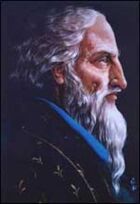
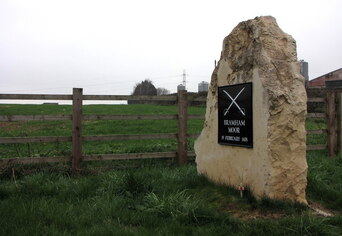
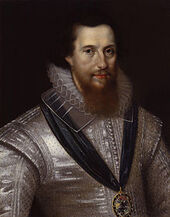
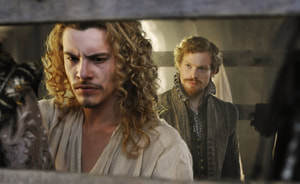
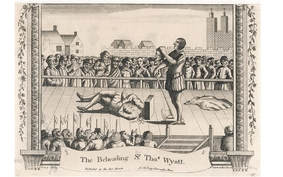
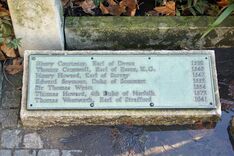
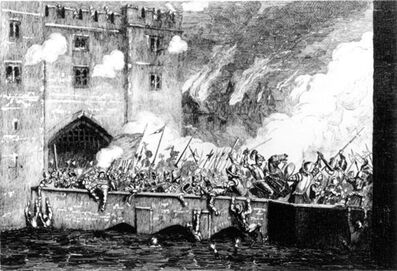
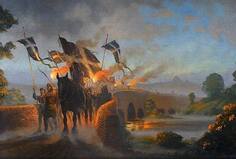
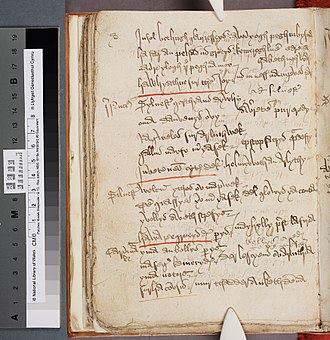
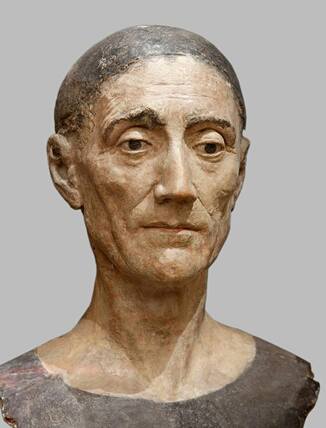
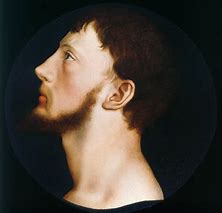
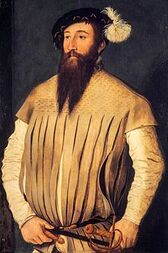
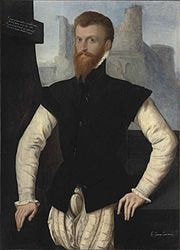
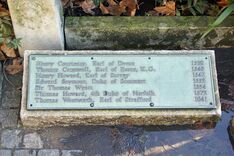

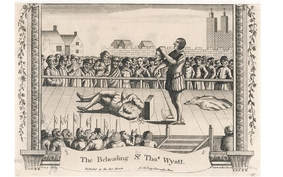
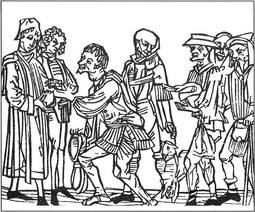
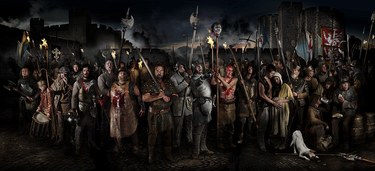
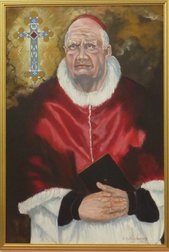
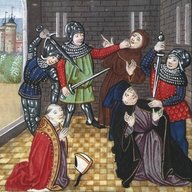
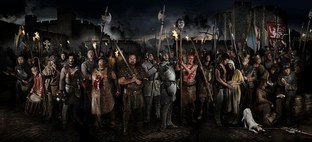
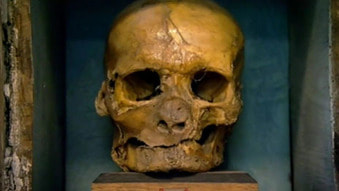

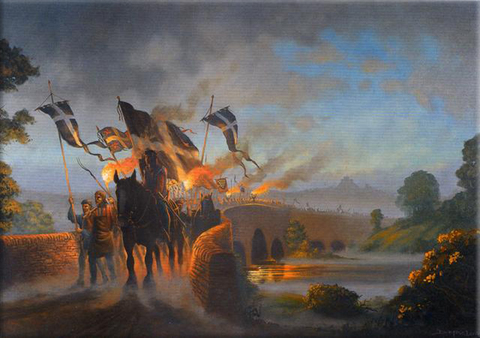
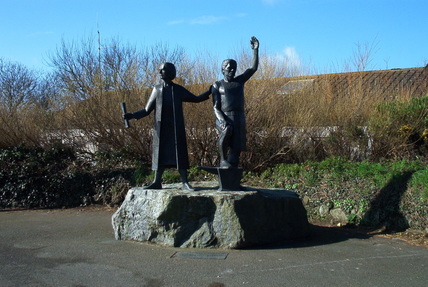
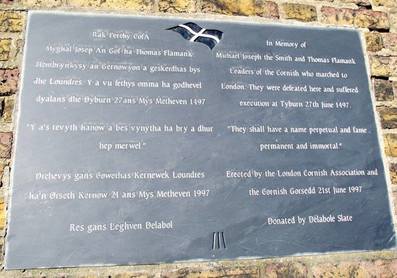

 RSS Feed
RSS Feed
